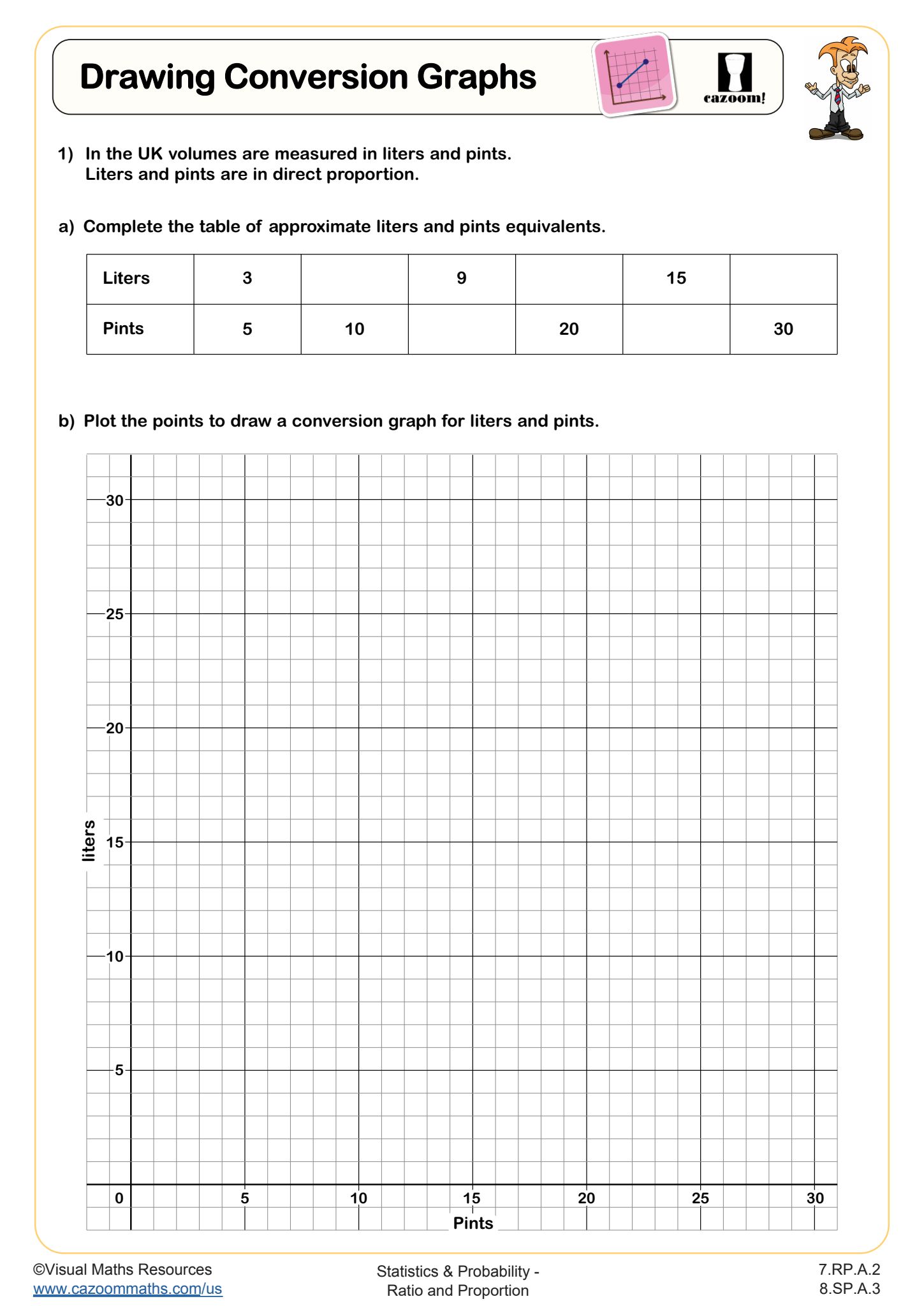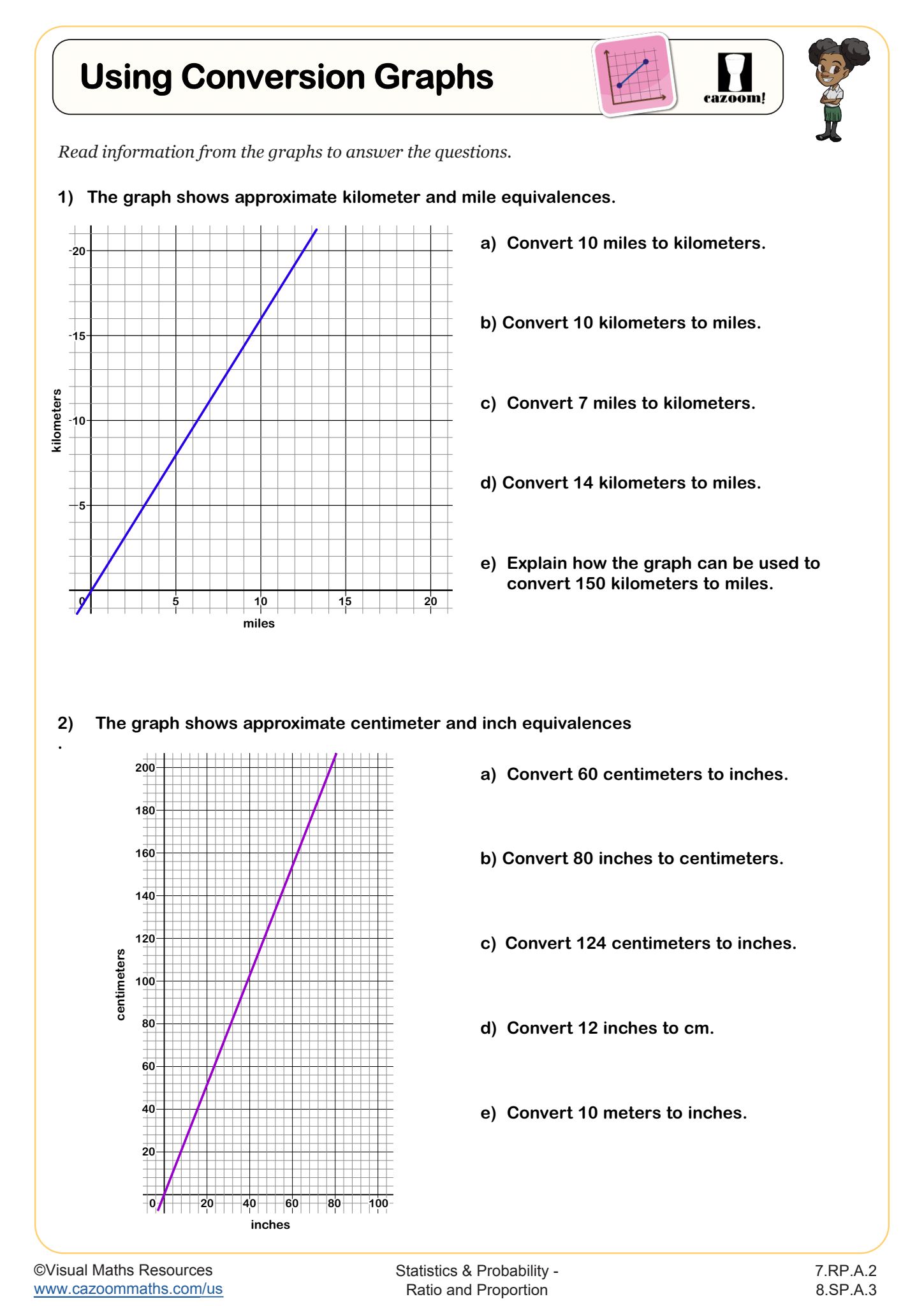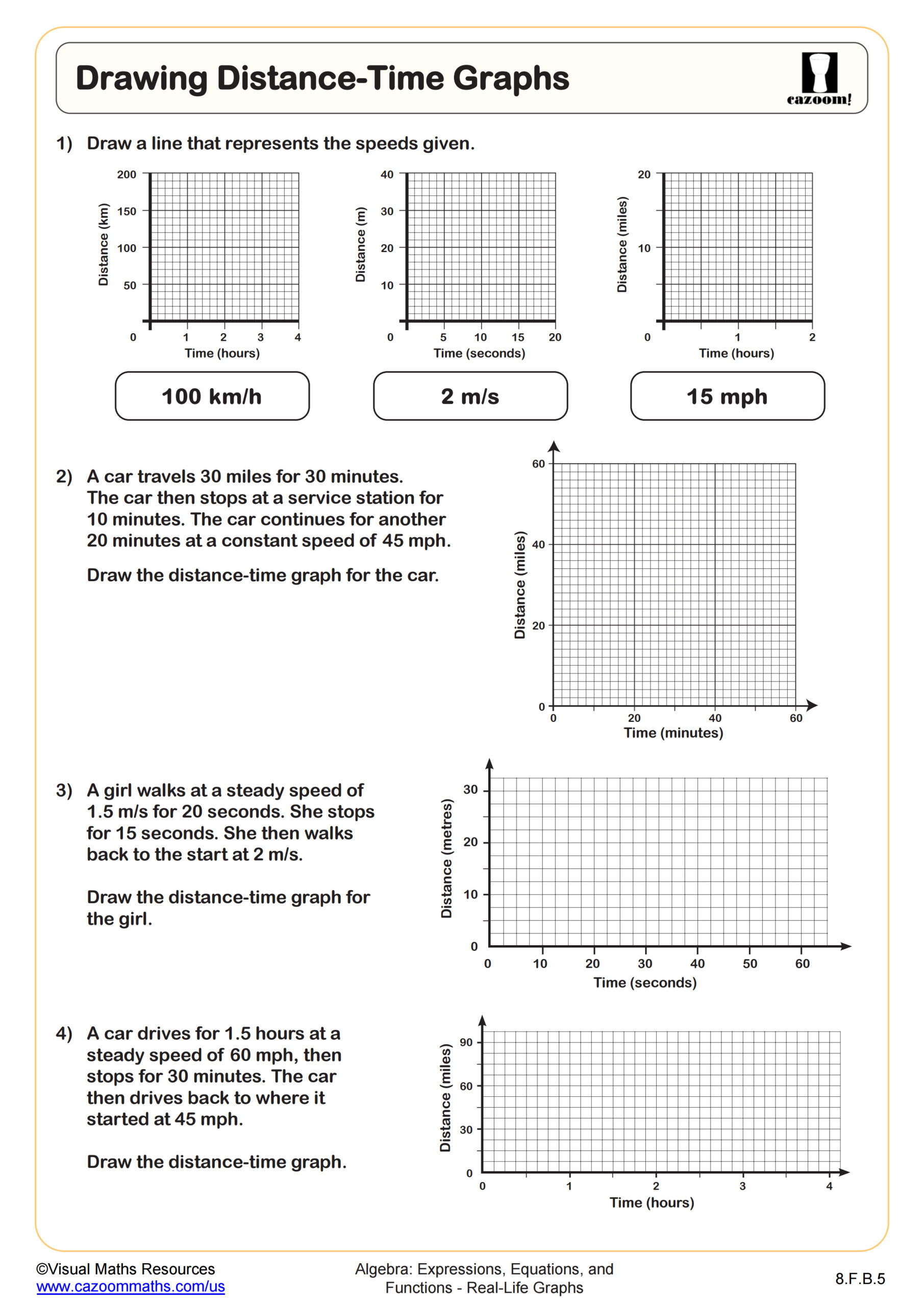Drawing Conversion Graphs WORKSHEET
Use the equation of a linear model to solve problems in the context of bivariate measurement data, interpreting the slope and intercept. For example, in a linear model for a biology experiment, interpret a slope of 1.5 cm/hr as meaning that an additional hour of sunlight each day is associated with an additional 1.5 cm in mature plant height.
Drawing Conversion Graphs WORKSHEET DESCRIPTION
Learners will plot four different conversion graphs across this worksheet.
In question 1, students will plot a graph showing the equivalence between liters and pints. They will complete a table of values before plotting these points on pre-drawn axes.
Next, in question 2, pupils will use the fact that 1 kg ≈ 2.2 pounds to draw a conversion graph.
The graph in question 3 will show the currency conversion between € and $. This time, students are required to label the y-axis appropriately.
Lastly, students will use the approximate formula for converting between degrees Celsius and Fahrenheit to draw a conversion graph in question 4. Again, learners are required to label the y-axis before drawing the graph.

RELATED TO Drawing Conversion Graphs WORKSHEET
Frequently Asked Questions
This drawing conversion graphs worksheet is designed for students in 7th Grade and 8th Grade and aligns with Common Core State Standards.



